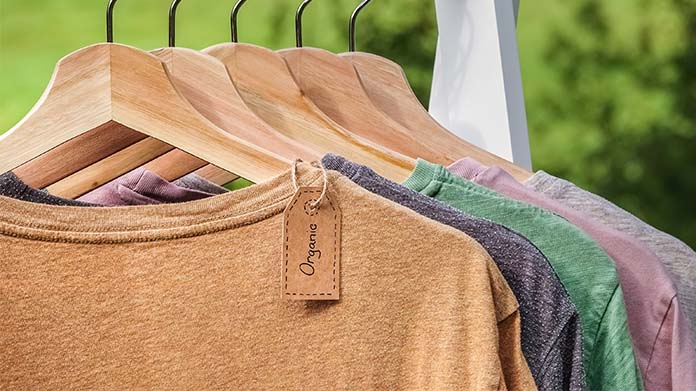Great Info To Picking Bamboo Clothes
Wiki Article
What Makes Hemp Durable, More Durable And More Regenerable?
Hemp is thought to be more biodegradable due its inherent properties and the method in which hemp grows. Here's why- Biodegradability-
Natural FiberNatural Fiber Hemp fibers are made from an organic plant that can be biodegradable. Clothing and textiles made from hemp are broken down with time. The waste is then returned to the earth with no permanent negative effects. This contrasts with synthetic fibers like polyester, which can take hundreds of years to decompose.
Hemp Textiles do not contain synthetic additives They do not contain synthetic additives. Hemp fibers usually don't contain synthetic additives. Some textiles made of cotton, on the other hand could have been treated with synthetic chemicals such as dyes and finishes that can delay biodegradation.
Durability-
Hemp fibers are distinguished by their durability and strength. Hemp clothes are less susceptible than cotton to wear out, so it lasts longer. This durability allows hemp garments to endure a greater number of washing cycles and wear cycles without showing evidence of wear.
Hemp fabric is less prone to pilling which is the formation of tiny, fuzzy balls on the surface of the fabric. This characteristic enhances their overall quality and durability.
Regenerative Agriculture-
Soil Health- Hemp cultivating is an regenerative method when carried out sustainably. Hemp can improve the quality of soil by improving soil health. The deep roots of hemp prevent erosion of soil. This regenerative aspect will make the soil suitable for future cropping.
Low environmental impact Sustainable hemp cultivation methods require the use of only a few pesticides. Contrary to conventional cotton farming can result in soil degradation and water pollution because of its dependence on synthetic chemicals.
Water Efficiency-
Hemp requires less water to development than cotton. Due to its drought-resistant characteristics, hemp can grow with little irrigation or rain. This makes it a better choice in areas where water is scarce, such as those that are dry.
Hemp can also be included in systems of crop rotation to enhance soil health, reduce disease risk and depletion. Crop rotation in cotton farming isn't as widespread.
Hemp's versatility allows it to be utilized in a variety of applications like clothing, textiles papers, building materials and paper. Hemp can be grown in many ways that include renewable and sustainable.
While hemp can provide these benefits, it is equally important to understand that both cotton and hemp can be produced sustainably or not, depending on the practices of farming and processes used. The environmental benefits of hemp could be enhanced by choosing hemp products that have been produced responsibly and in accordance with environmentally friendly methods. In a similar way, choosing organic cotton products can help alleviate some environmental problems associated with conventional cotton production. Have a look at the top koraoutdoor.com outdoor clothing for blog examples including hemp mens jeans, hemp mens jeans, hemp and cotton fabric, 100 hemp t shirt, hemp dress, hemp clothing for men, patagonia hemp shorts, hoodlamb coat, hemp t shirts wholesale, hemp t shirts wholesale and more.

How Can Hemp Fibers Benefit On Carbon Sequestration, Sustainability And The Crop Rotation?
Hemp fibers aid in carbon storage, sustainability and crop rotation in a variety of ways. This makes them a good choice for textile and agricultural production.
Fast Growth- Hemp is a fast-growing plant that matures between 70-120 days, based on the variety and growth conditions. During their rapid-growth phase, hemp absorbs carbon dioxide from the air through photosynthesis. The carbon absorption process can aid in the carbon dioxide sequestration which reduces the amount of CO2 that is absorbed by the atmosphere.
Hemp produces lots of biomass. The plant's tall stalks as well as dense foliage yield a large quantity of organic matter. If the biomass is utilized in the soil for various reasons, it could help to increase the amount of organic carbon.
Sustainability:
Hemp requires less synthetic pesticides, herbicides and herbicides than other crops such as cotton. The natural resistance of hemp reduces the requirement for chemical intervention. Organic hemp farming is a sustainable way of cultivating hemp since it doesn't use synthetic chemicals.
Hemp can be irrigated with only a small amount of water, in contrast to traditional cotton, which is water-intensive. This makes hemp more durable in areas that have scarce water resources.
Hemp's deep roots are able to improve soil health. Its deep roots can help lower runoff through stabilizing soil and enhancing soil structure. Hemp is a great plant to boost soil microbial activity. This promotes nutrient cycles and soil fertility.
Hemp can be incorporated into crop rotation systems. Crop Rotation is a method that involves rotating different crops over time in the same area. This helps break cycles of disease and pests as well as reduce soil depletion and improve the soil's structure. The role of hemp in crop rotation is vital to the long-term sustainability of farming.
Crop Rotation
Hemp is also a good addition to crop rotations alongside other crops like grains, legumes, or vegetables. This diversification will help maintain soil health. It also lowers the threat of attracting pests and diseases that are particular to crops and promote an appropriate nutrition cycle.
Hemp’s deep roots penetrate soil and aerate it, reducing compacting and increasing the rate of water infiltration. Following the harvest of hemp, the improved soil structure benefits subsequent crops in the rotation.
In summary hemp fibers can enhance carbon sequestration sustainable, crop rotation and efficiency of water through their rapid growing biomass production, as well as their low chemical needs. These characteristics make hemp cultivation an environmentally sustainable and regenerative agricultural practice, and the hemp fibers that result are an eco-friendly alternative for textiles as well as other uses. See the most popular our site for hemp clothes for site advice including hemp apparel fabric, hemp apparel fabric, hemp coat, patagonia work pants hemp, hemp shorts, hemp textiles, t shirt hemp, hemp yoga clothes, patagonia iron forge jacket, hemp garments and more.

What's the difference between hemp fiber and bamboo fibre?
The two plant-based fibers hemp as well as Bamboo are used in textile manufacturing, and each has their own characteristics and properties. Here are the major differences between bamboo and hemp fibers. Plant Source-
Hemp- Hemp fibres are constructed from the bast of stalks. Hemp is a versatile and quick-growing plant that has been used for a variety of reasons for centuries.
Bamboo The bamboo fibres are made by the cellulose of bamboo plants. Bamboo is grass that is fast growing and is well-known for its sustainability.
2. Fiber Characteristics
Hemp Fibers- Hemp fibers are known for their their strength and durability. Hemp fibers are among the strongest natural fibers, and soften with each wash, making them suitable for long-lasting textiles.
Bamboo Bamboo fibers are extremely soft and smooth. They also have a silky feel. The fibers are not as strong than hemp, but they are also more delicate. However they are highly sought-after for their comfort when placed against the skin.
3. Texture Feel, Look and Texture-
Hemp- Hemp fabrics have rough, somewhat coarse sensation in their natural state. It's comfortable, but the texture is different than bamboo.
Bamboo is silky smooth and soft. It has been described as feeling like cotton and silk.
4. The ability to breathe and the moisture-wicking properties-
Hemp- Hemp fibers are naturally water-wicking and breathable, which allows to circulate air and absorb moisture. They keep you cool and dry during the summer heat.
Bamboo fibers are also extremely breathable. They can wick moisture away. The micro-gaps improve the capacity of bamboo fibers to regulate humidity and temperatures, keeping you comfortable no matter what conditions.
5. Environmental Impact-
Hemp- Hemp fiber is an environmentally friendly product due to its water-resistance, rapid growth as well as its resistance to pests. This reduces the need for herbicides and pesticides. Hemp can absorb CO2 from the air as it grows.
Bamboo is considered to be a material that is sustainable. It is fast growing, requires little water, and doesn't need synthetic pesticides. Some bamboos are regarded as sustainable, including Moso bamboo.
6. Processing-
Hemp- Hemp fibers require intensive processing to separate outer bast fibers and the woody core. The process may require the process of retting (decortication) or mechanical separation or the process of retting.
Bamboo- Bamboo Fibers are made through a chemcial process called the viscose/rayon process. The process involves breaking down bamboo pulp. When not properly managed, this process is harmful to the natural environment. However some bamboo fabrics utilize closed loop systems to minimize production waste.
7. Versatility-
Hemp- Hemp can be used to make a variety products, including clothes, textiles paper and other building materials.
Bamboo Fibers Bamboo fibers have been used for clothing, textiles and many other items.
Summary The two types of bamboo provide unique advantages and are environmentally sustainable. Your choice depends on your personal preferences regarding the environment as well as what you want in terms of particular properties and characteristics. Have a look at the top rated look at this on bamboo clothing for blog examples including bamboo maternity wear, cheapest bamboo pajamas, bamboo baby clothes, bamboo leggings, halloween bamboo pajamas, ladies bamboo tops, cotton bamboo pajamas, bamboo clothing, bamboo pants, bamboo baby pajamas and more.
